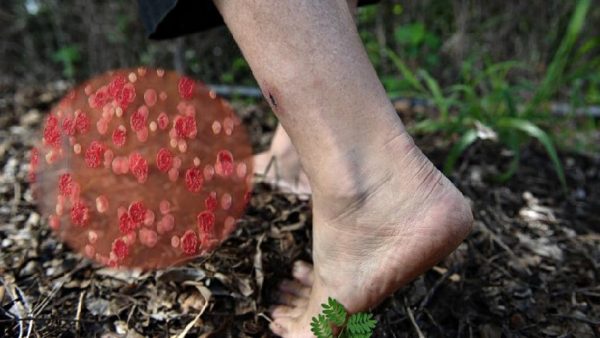
CDC Warns About Infectious Rare Illness Melioidosis In United States
Melioidosis is a bacterial infection which is a rare disease caused by Burkholdria pseudomallei saprophytic gram-negative bacillus. Another name of Melioidosis is Whitmore’s disease. This infectious disease generally appears in tropical countries like Southeast Asia and Northern Australia. Recently the Centers for Disease Control and Prevention (CDC) of USA has confirmed appearance of this disease in different states resulting in death of two out of four patients.
The Centers for Disease Control and Prevention (CDC) has confirmed a new fatal case of the rare disease melioidosis in Georgia that is linked to three previous cases in different states. The cases have included adults and children. Two of the four patients had no known risk factors for melioidosis; two died.
Sequencing of bacteria showed that the samples collected from four different states closely match each other which means the bacteria originated from common source. The strain appears closely related to the strain from South Asia. Interesting factor is none of the four patients has not traveled internationally!
The bacterial lives in soil and water and in some circumstances can be found in wet or moist contaminated products where bacteria grow. Soil and water samples collected from patients’ house for further testing and so far none of the samples have tested positive for the bacteria Burkholderia pseudomallei, which causes melioidosis. The possible origin of the bacteria could be through imported food or drink or medicines or personal cleaning products or from the ingredients of the similar types of products -according to CDC.
Reasons for difficulty in identification of the source of infection is due to patients are living in different places and the time of the illness began at different time. All four patients could have been exposed to hundreds of such products where bacteria thrives. Moreover, the bacteria takes nearly three weeks to make someone sick and symptoms appear.
- Transmission of melioidosis is from direct contact of contaminated soil and water.
- Inhalation of dust or water droplets, drinking or ingesting contaminated food and water or contaminated soil through skin abrasions
Symptoms of melioidosis: Because of complexity of the symptoms, it could be mistaken for pneumonia or tuberculosis diseases. Generally, symptoms appear within three to four weeks.
- Localized infection could result in: pain and swelling, fever, ulceration, abscess
- Pulmonary or lung infection symptoms like: cough, high fever, headache, chest pain, anorexia
- Blood infection: fever, headache, respiration problem, stomach discomfort, disorientation, pain in joints
- Disseminated Infection symptoms could result in : weight loss, stomach pain, muscle and joint pain, central nervous system infection and, seizures
Pre-existing conditions such as liver problem, diabetes, renal disease, cancer, chronic lung conditions and AIDS patients are at higher risk of Melioidosis infection.
Prevention: CDC advising people to take extra precautions to combat the fatal bacteria. Here are CDC’s precautions for those who work with soil, water and take care of patients.
- Persons with open skin wounds and those with diabetes or chronic renal disease are at increased risk for melioidosis and should avoid contact with soil and standing water.
- Those who perform agricultural work should wear boots, which can prevent infection through the feet and lower legs.
- Health care workers can use standard precautions when treating patients with melioidosis to help prevent infection.
Treatment: Notify your physicians and get test done. Your doctor will tell you what medicines and treatments one can take (intravenous therapy or oral antimicrobial treatment )
For more information on Melioidosis please visit: https://www.cdc.gov/media/releases/2021/s0909-melioidosis.html
Image credit: https://www.omicsonline.org/ & www.cdc.gov
Author: Sumana Rao | Posted on: August 10, 2021
« China Reports First Human Infection And Death By Monkey B Virus Weight loss Fat Patch is trialled in US »






















Write a comment